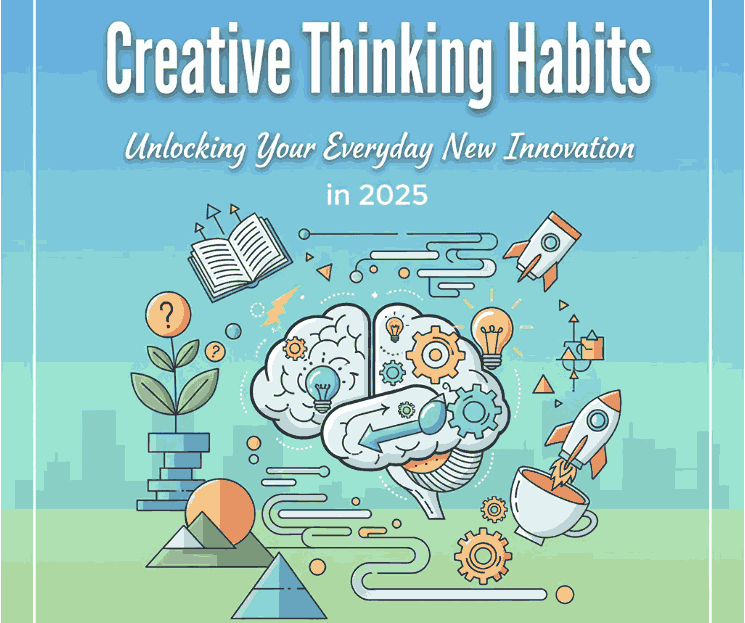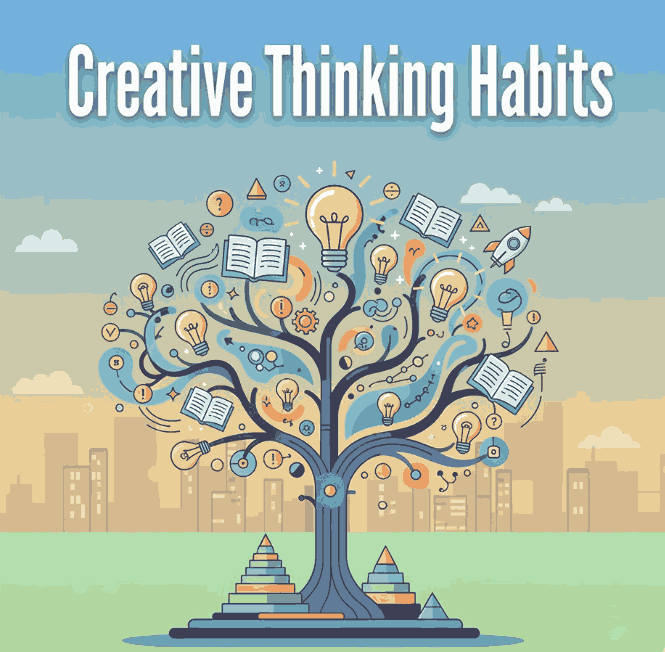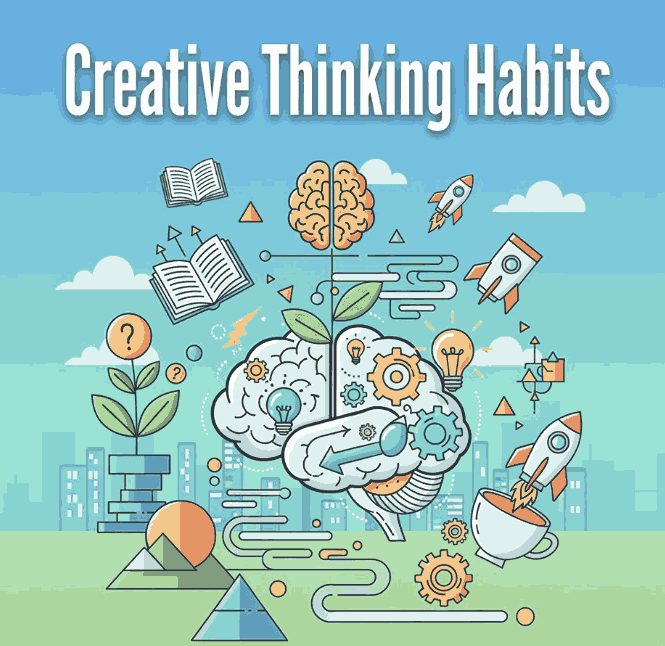
Table of Contents
- Introduction
- Understanding Creative Thinking
- Why Habits Shape Your Creativity
- Daily Habits That Boost Creative Thinking
- The Role of Environment and Design
- How Fonts Influence Creativity
- Final Thoughts
- References
1. Introduction
Creative Thinking Habits is not just a gift reserved for artists, designers, or inventors — it’s a habit that anyone can develop. Whether you’re designing a new product, writing, or managing a business, Creative Thinking Habits can help you unlock new ideas and approach problems from fresh perspectives.
In this article, we’ll explore how small daily habits can improve your creative process, and how visual design elements — like typography — can enhance Creative Thinking Habits and emotional connection.
2. Understanding Creative Thinking Habits
Creative thinking involves seeing patterns, making unexpected connections, and transforming simple ideas into innovative solutions. It’s the ability to think beyond the obvious and to challenge conventional assumptions.
Modern psychology defines creative thinking as a combination of divergent thinking (generating many unique ideas) and convergent thinking (narrowing down to the most effective solution).
According to Harvard Business Review, creativity flourishes when people allow themselves freedom to experiment and make mistakes — the essence of growth and innovation.

3. Why Shape Your Creative Thinking Habits
Your mind thrives on repetition and structure. The way you start your day, the spaces you create, and the routines you maintain directly influence how easily creative thoughts flow.
Here are key reasons why habits matter:
- Consistency builds creative stamina. Regular creative routines keep your mind flexible and resilient.
- Small habits reduce mental barriers. By forming routines like journaling or doodling, you lower the pressure of “having to be creative.”
- Positive repetition creates momentum. Each small action compounds, turning creativity into a natural part of your identity.
4. Daily Habits That Boost Creative Thinking Habits
Here are proven habits that can help you nurture your creativity:
1. Morning Mindset Reset
Start your day with mindfulness or journaling. Write down ideas, even unfinished ones — your subconscious will develop them later.
2. Surround Yourself with Inspiration
Design a workspace that sparks curiosity. Use textures, colors, and typography that make you feel creative.
Try experimenting with beautiful typefaces to enhance your workspace visuals:
- Super Dreamer Font – perfect for motivational posters or quotes.
- Hashtag Trend Font – ideal for modern social media projects.
- Overcame Font – strong, inspiring, and perfect for branding that reflects resilience.
- Kidsway Font – playful and imaginative, great for children’s projects or fun brainstorming visuals.
3. Practice Divergent Creative Thinking Habits
Set aside 10 minutes daily for free-flow brainstorming. Write or sketch as many ideas as possible, no matter how unrealistic.
4. Limit Distractions
Turn off notifications during your creative time. Protect your “deep work” sessions — even 30 minutes of focused thinking can make a difference.
5. Reflect and Reframe
Before ending your day, reflect on what you created. Reframing mistakes as “creative experiments” helps build confidence and persistence.
5. The Role of Environment and Design
Your environment plays a crucial role in shaping creative thinking. Studies from Stanford University show that creative performance increases by up to 60% in well-designed, aesthetically pleasing spaces.
Adding meaningful visuals like inspiring fonts, artwork, or color palettes can influence your emotions and cognitive flexibility. Typography, in particular, communicates tone, mood, and emotion — turning ideas into tangible forms of self-expression.

6. How Fonts Influence Creative Thinking Habits
Fonts are more than just letters — they are visual voices. The typefaces you choose can set the mood for your creative process. For example:
- Script fonts like Super Dreamer Font evoke elegance and imagination.
- Modern sans-serif fonts like Hashtag Trend Font encourage clarity and forward thinking.
- Handwritten fonts such as Kidsway Font inspire playfulness and freedom.
Using different fonts can help you “shift creative gears.” When brainstorming, a playful font can loosen your mindset, while a bold, structured one can push you toward clarity and execution.
Typography is an underrated creativity tool — and incorporating it into your visual projects can enhance emotional resonance and design depth.
7. Final Thoughts
Developing creative thinking habits isn’t about waiting for inspiration — it’s about building consistent practices that invite it.
By cultivating curiosity, maintaining a positive mindset, and surrounding yourself with inspiring visuals (like stunning fonts from Calligraphy Fonts), you create the perfect foundation for continuous creative growth.
Remember: creativity grows through action. Start small, stay curious, and let your habits shape your imagination.
8. References
- Harvard Business Review — Creativity and Innovation
- Stanford University — Research on Creativity
- Psychology Today — How Habits Shape Creativity
- Adobe Creative Cloud Blog — Building Daily Creative Routines
